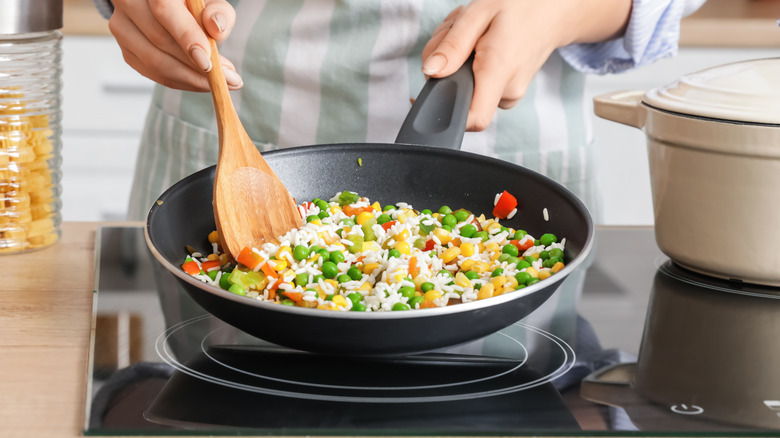The Definitive Guide To Pots And Pans In The Kitchen
Sauté Pan:
I honestly don't know how people mess this one up since the function of this pan is in its damn name. Sauté pans, used for sautéing (*gasp*), have large surface areas and low sides so that the food can be tossed around easily. With the right pan, high heat, chopped ingredients and wrist dexterity, you can make a bomb sautéed meal like a pro. Stir-fry, anyone?
Stock Pots:
An essential piece of equipment for every kitchen, a stock pot is large with a flat bottom, long sides, two handles and a lid. They're usually used for cooking that requires a lot of liquid, including soups, broths, corn, and pasta (oops). They also work well for busting out your hidden drum "talent." Yeah, we all do it.
Fry Pan:
Basically, if your best friend were a pan it would prob be a fry pan. The cooking surface is usually coated with butter, oil or anything fatty, also known as the best foods. The long stick handle allows for flipping and the medium-height sides keep food in (except my pancakes still land on the ground...).
Double Boiler:
Don't let this two-part pan intimidate you. This cooking utensil is basically a thin-bottom pan placed inside a larger pan that's filled with water. Used for delicate ingredients that require indirect heat, a double boiler is perfect for melting chocolate. You're welcome.
Griddle:
These smooth, rectangular bad boys are perfect for whenever high heat is needed and you're looking to cook something flat. Think pancakes, burgers, eggs and grilled cheeses.
View the original post, The Definitive Guide to Pots and Pans in the Kitchen, on Spoon University.
Check out more good stuff from Spoon University here:
